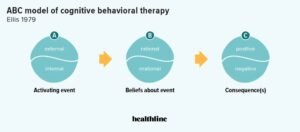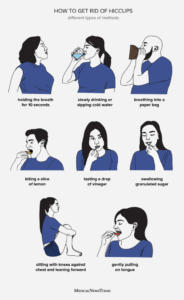Obesity Hypoventilation Syndrome (OHS)_ What to Know
Understanding Obesity Hypoventilation Syndrome (OHS): A Comprehensive Overview
What Is Obesity Hypoventilation Syndrome (OHS)?
Obesity Hypoventilation Syndrome (OHS), also known as Pickwickian Syndrome, is a condition where individuals with a high body mass index (BMI) experience difficulty breathing both during the day and at night. People affected by OHS have slow, shallow breathing that results in insufficient oxygen intake and an excessive buildup of carbon dioxide in the blood. Unlike sleep apnea, OHS occurs both when awake and asleep, making it a more complex condition to manage.
The Connection Between Obesity and Breathing Problems
OHS primarily affects individuals with a BMI over 40, and it becomes increasingly common in those with a BMI above 50, a condition previously referred to as morbid obesity. Medical experts are still uncertain about the exact cause of OHS, but it is thought to be linked to the brain’s ability to regulate breathing. Additionally, leptin, a hormone that helps manage body weight, plays a role in regulating respiration. Individuals with OHS may have a resistance to leptin, contributing to their breathing difficulties.
Differences Between OHS and Sleep Apnea
Sleep apnea, a condition often associated with obesity, causes individuals to temporarily stop breathing during sleep due to airway blockages. This leads to reduced oxygen levels and can cause other symptoms like snoring and fatigue. Unlike sleep apnea, OHS results in shallow and slow breathing, which occurs both while awake and asleep. People with OHS may not stop breathing entirely but may struggle to get enough oxygen, leading to lower oxygen and higher carbon dioxide levels in the blood. In fact, over 90% of individuals with OHS also have sleep apnea, with obstructive sleep apnea being the most common type.
Common Symptoms of OHS
The primary symptom of OHS is shortness of breath, particularly during physical exertion. Other common signs include:
-
Daytime fatigue and sleepiness
-
Poor sleep quality, often waking up feeling unrested
-
Headaches
-
Mental fatigue and difficulty focusing
-
Bluish tint to the skin, particularly around the lips, hands, and feet
-
Swollen limbs
Diagnosing OHS: What to Expect
If you or someone you know is experiencing symptoms of OHS, it is important to seek medical attention. Left untreated, OHS can be fatal. Diagnosis typically involves:
-
Blood tests to measure oxygen and carbon dioxide levels in the blood
-
Chest X-ray or CT scan to rule out other causes of breathing difficulties
-
Pulmonary function tests to assess lung capacity
-
Echocardiogram to evaluate heart function
-
Sleep study to determine the presence of sleep apnea
Potential Risks and Complications of OHS
If left untreated, OHS can lead to severe complications, including:
-
Heart failure and other cardiac issues
-
Vascular problems
-
Mental health disorders such as depression
In extreme cases, OHS can be life-threatening, making early diagnosis and treatment crucial.
Treatment Options for OHS
The goal of OHS treatment is to improve oxygen intake and make breathing easier. Treatment options may include:
-
Oxygen therapy to increase oxygen levels in the blood
-
Non-invasive ventilation devices, such as CPAP or BiPAP machines, typically used during sleep
-
In severe cases, a tracheostomy, a surgical procedure that creates an opening in the neck to assist breathing, may be recommended
Weight Loss and Its Role in OHS Management
While weight loss is often suggested as part of an overall treatment plan for OHS, it is not always effective in reversing the condition. Studies have shown that even significant weight loss, such as 6-7% of body weight, may not improve OHS symptoms. However, for individuals who undergo bariatric surgery and lose a substantial amount of weight (around 25-30% of total body weight), there may be noticeable improvements in OHS symptoms.
Conclusion: The Importance of Managing OHS
Obesity Hypoventilation Syndrome (OHS) is a serious condition that can significantly affect a person’s ability to breathe and overall quality of life. It is essential to seek timely medical treatment to prevent complications such as heart failure or death. While weight loss may be part of the treatment plan, effective management of OHS typically involves oxygen therapy and respiratory support. If you suspect you have OHS, consult with a healthcare professional to discuss the best course of action.
Frequently Asked Questions (FAQs)
What is the link between obesity and breathing difficulties?
Obesity can impact the body’s ability to regulate breathing, leading to conditions like OHS, where shallow, slow breathing reduces oxygen intake and increases carbon dioxide levels in the blood.
Can I have OHS without sleep apnea?
Yes, OHS can occur independently of sleep apnea, though over 90% of individuals with OHS also have sleep apnea, particularly obstructive sleep apnea.
Expert Tips
-
Be mindful of your breathing habits and seek medical attention if you experience consistent shortness of breath.
-
Consider lifestyle changes, including gradual weight loss, as part of your OHS management plan.
-
Ensure you get high-quality sleep to help mitigate some of the symptoms of OHS.
Key Takeaways
-
OHS is a serious condition that can lead to life-threatening complications if not treated properly.
-
Diagnosis often involves blood tests, imaging, and sleep studies to confirm the presence of the syndrome.
-
Treatment options include oxygen therapy, non-invasive ventilation, and, in severe cases, surgery.
Join Our Community
Stay informed with the latest updates and tips on managing OHS and other health concerns. Subscribe to our newsletter for expert advice and treatment options!




